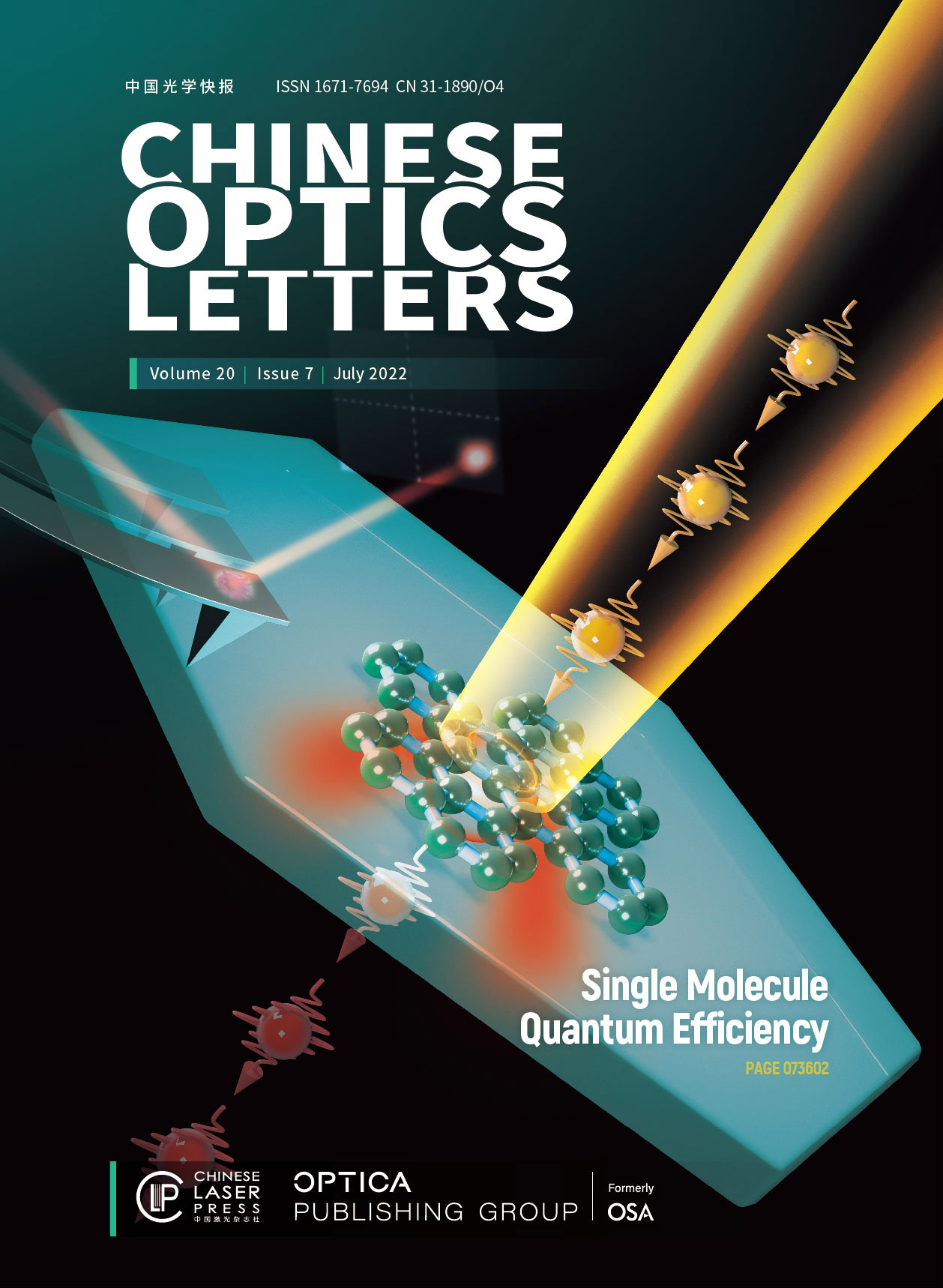Journals >Chinese Optics Letters
- Publication Date: May. 26, 2022
- Vol. 20, Issue 7, 070201 (2022)
- Publication Date: Apr. 27, 2022
- Vol. 20, Issue 7, 071101 (2022)
- Publication Date: May. 24, 2022
- Vol. 20, Issue 7, 073701 (2022)
- Publication Date: May. 07, 2022
- Vol. 20, Issue 7, 071301 (2022)
- Publication Date: May. 07, 2022
- Vol. 20, Issue 7, 071401 (2022)
- Publication Date: May. 24, 2022
- Vol. 20, Issue 7, 071402 (2022)
- Publication Date: May. 24, 2022
- Vol. 20, Issue 7, 071403 (2022)
- Publication Date: May. 31, 2022
- Vol. 20, Issue 7, 073901 (2022)
- Publication Date: Apr. 29, 2022
- Vol. 20, Issue 7, 073601 (2022)
- Publication Date: May. 04, 2022
- Vol. 20, Issue 7, 073602 (2022)
- Publication Date: May. 31, 2022
- Vol. 20, Issue 7, 073603 (2022)
- Publication Date: May. 07, 2022
- Vol. 20, Issue 7, 072601 (2022)
- Publication Date: May. 04, 2022
- Vol. 20, Issue 7, 073001 (2022)
About the Cover
Single molecules embedded in solid-state matrix have been actively investigated as model systems for fundamental molecular physics and as sources of single photons. In particular, single dibenzoterrylene molecules in crystalline anthracene matrix have been demonstrated as definite stable single-photon emitters with nonblinking emission and lifetime-limited linewidth at cryogenic temperatures. However, as a critical piece of information, their quantum efficiency has not been experimentally measured at the single-molecule level. Here, by monitoring the fluorescence lifetime change during the natural sublimation process of the anthracene matrix and its thickness, we experimentally probe the fluorescence quantum efficiency of single dibenzoterrylene molecules. Such a simple approach might be applicable to other solid-state single-molecule systems.












